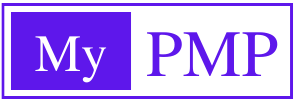Combined Agile and Predictive Approach
Combining agile and prediction methods at the same time is called a “hybrid approach,” and it can be helpful in some project situations where the benefits of both methods need to be weighed. Here’s what you can do:
1. Project Planning: When you first plan a project, use a predictive method to set the project’s general scope, schedule, and budget.
– Identify major deliverables and objectives right away based on what you know and what is needed.
2. Iterative creation: Use an agile method for the project’s creation and delivery stages.
Break the project up into smaller pieces, called iterations or sprints. During each sprint, you should focus on providing incremental value and getting feedback from stakeholders.
– Use agile methods like Scrum or Kanban, which have timed steps and ensure that the project is always getting better.
3. Change Management: Use change management techniques to deal with changes during the span of a project. Agile lets you be flexible, while a predictive method helps you handle changes within the scope and limits that have already been set.
4. Risk management: Use strategies from both systems to deal with risks.
– Use a prediction method to find possible risks and make plans to deal with them.
– Use an agile method to deal with risks and adapt to changes in the project as they happen.
5. Engaging Stakeholders: Use agile principles to keep stakeholders involved in the project and ask for their opinions and help making decisions.
– Use the predictive method to manage the expectations of stakeholders, especially when it comes to the project’s overall scope, schedule, and budget.
6. Communication and Reporting: Keep in touch with stakeholders regularly and openly, following the ideals of agile methodologies.
– Use the predictive method to meet formal reporting needs, giving updates on the project’s status, progress, and key deliverables on a regular basis.
7. Continuous Improvement: Use the agile approach’s methods for continuous improvements, such as retrospectives, to look at how the project is going and find places where it could be better.
– Based on the predictive method, use the lessons learned in future iterations or change the project plan as a whole.
The hybrid approach lets organizations take advantage of the predictability and framework of a predictive approach while also taking advantage of agile methods’ flexibility, adaptability, and stakeholder involvement. But it’s important to think about how hard and complicated it is to manage both methods at the same time and to make sure that the project team and stakeholders can work together and talk to each other well. Depending on the needs and limits of the project, the way the two methods are put together may be different.
Related Posts:
- Agile Team Roles
- Initial Ranked Backlog for Change
- The Relationship Between Change Management and Agile Approaches
- Cumulative Flow Diagram of Completed Features
- The Twelve Principles Behind the Agile Manifesto
- The Four Values of the Agile Manifesto
- Team Structures
- Frameworks (Agile)
- Organizational Culture (Agile)
- Readiness for Change
- Charter the Project and the Team
- Overcoming Organizational Silos







